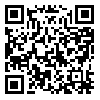Volume 37, Issue 3 (Journal of Advanced Materials-Fall 2018)
2018, 37(3): 87-105 |
Back to browse issues page
Download citation:
BibTeX | RIS | EndNote | Medlars | ProCite | Reference Manager | RefWorks
Send citation to:



BibTeX | RIS | EndNote | Medlars | ProCite | Reference Manager | RefWorks
Send citation to:
Mirzaaei ghasabe H, Zakeri A, Mirdamadi S, Ghorbanzadeh M. Optimization of the Selective Dissolution of Li from the Spent Li-ion Batteries using Oxalic Acid by a Response Surface Methodology. Journal of Advanced Materials in Engineering (Esteghlal) 2018; 37 (3) :87-105
URL: http://jame.iut.ac.ir/article-1-964-en.html
URL: http://jame.iut.ac.ir/article-1-964-en.html
1. Metal Extraction Research Laboratory, School of Metallurgy and Materials Engineering, Iran University of Science and Technology, Tehran, Iran. , zakeria@iust.ac.ir
Abstract: (6717 Views)
In this study, the recovery of lithium from the cathode of the spent Li-ion batteries of the LiNixMnyCozO2 type was investigated. After complete discharging and dismantling, the cathodic section was cut and its aluminum content was selectively dissolved in 2.5 M NaOH solution at room temperature for 2 hr. In the next step, selective dissolution of lithium by oxalic acid from the de-aluminized cathode material was investigated and optimized using the response surface methodology of the central composite design. The effect of three parameters of time (35-100 min), temperature (40-70 °C), and oxalic acid concentration (0.5-1.2 M) on the lithium recovery percentage and manganese concentration was studied as the response variables. According to the statistical analysis of the results and the developed models, an optimum condition (T = 70 °C, t = 122 min and oxalic acid concentration of 1.1 M) was suggested and verified experimentally, resulting in the lithium recovery of about 95% and Mn2+ concentration of about 110 mg/L.
Keywords: Recycling, Spent Li-ion battery, Selective dissolution, Design of experiments, Oxalic acid.
Type of Study: Research |
Subject:
Extractive metallurgy
Received: 2018/03/8 | Accepted: 2018/07/1 | Published: 2018/12/15
Received: 2018/03/8 | Accepted: 2018/07/1 | Published: 2018/12/15
Send email to the article author







